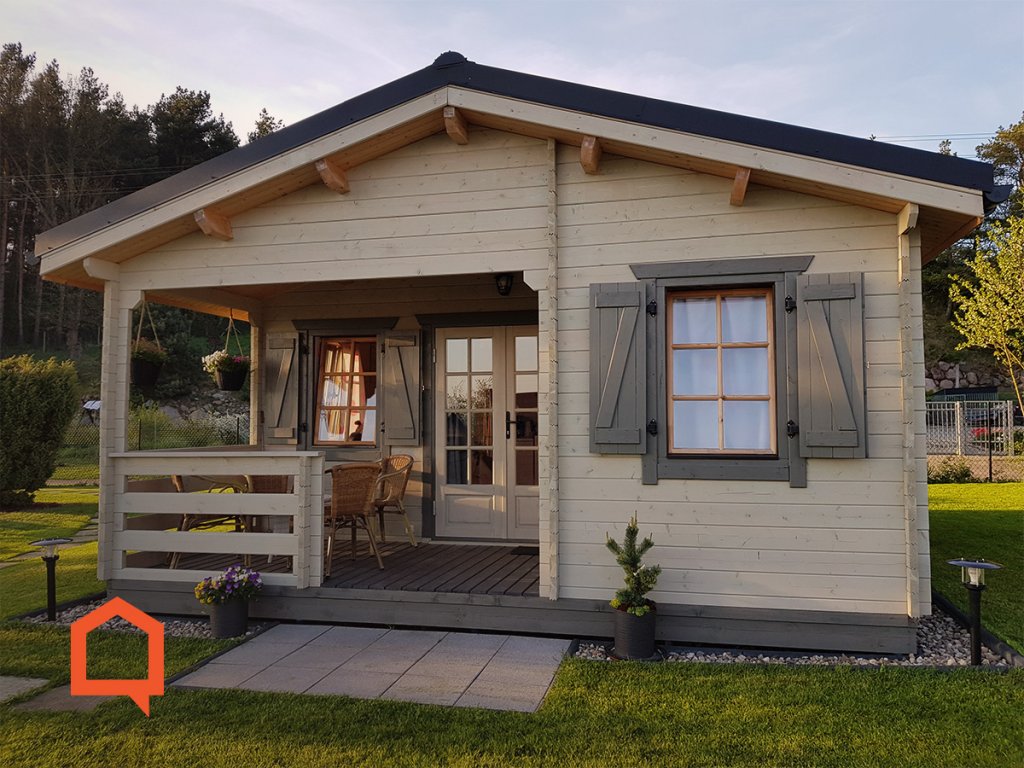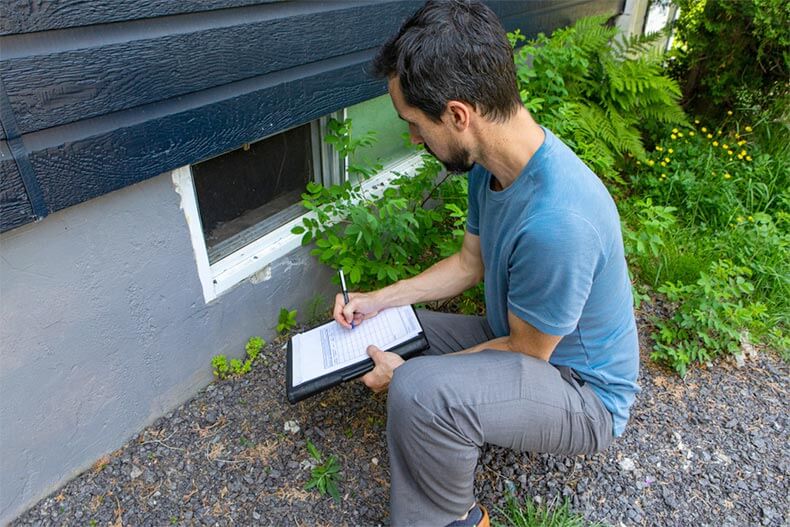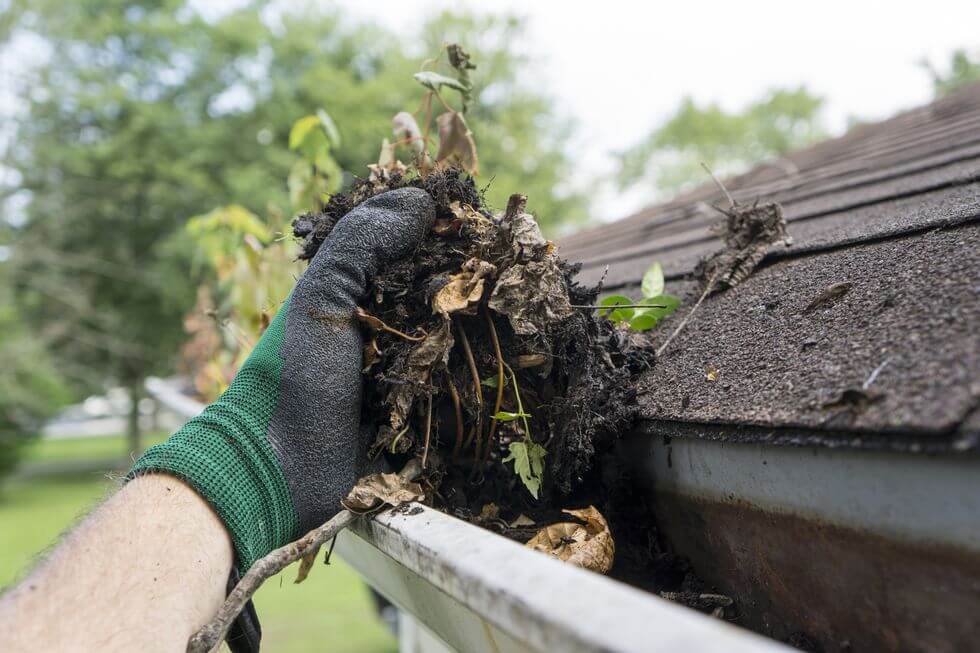A log cabin is not only a fantastic investment, but also a versatile space that can be enjoyed by all the family. Log cabins provide the perfect area to work, relax and entertain. A well-built and maintained log cabin home can last for decades.
After installation, a common question we get asked is what the customer needs to do in terms of log home maintenance and care. Our services involve log cabin planning and construction, but we always recommend from a professional viewpoint that on-going care and maintenance of your log cabin is a must. Whilst this will all depend on several factors including the design of your log cabin, the site location and environmental aspects (such as yearly weather conditions), routine log cabin maintenance will help protect your log cabin from UV, rain water, insect and air infiltration damage. This help guide looks at the different areas of log cabin maintenance.

Yearly log home maintenance and checks is a must. It is recommend that you should then treat or touch up your log home about every three years to keep the exterior well maintained. The more you keep up with maintenance, the easier and more cost-effective it is to protect your log home.
It is important to take a proactive approach to inspecting various elements of your log cabin throughout the year as it can be easily neglected. For your log cabin maintenance we recommend to focus particularly on the joints around doors and windows, cabin roof section and visible gaps between the roof and the foundations, as these areas can damage over time. Minimising moisture levels in and around your cabin will keep it protected.
When inspecting the roof look for damaged or loose shingles/tiles, warped flashing, leaky or full gutters or exposed rafters. Pay close attention to the chimney – look for damaged flue pipes, loose flashing, cracks between the flue pipe and chimney or chimney and roof.
When inspecting the walls try to find loose or cracking caulk, cracks/checking in the timber, popped knots, signs of damp, mildew or mod, faded stain and splash back from gutters.
When inspecting the surroundings make sure plants and pots are at least 60 cm away from your log walls, decking and railings have no erosion or lose areas, drainage has no standing water.

Washing the inside and outside of your log cabin is a great opportunity not only to inspect the areas that you usually aren’t able to see, but remove any surface level dirt such as dust, mildew, pollen, bird faeces and insect deposits (i.e. spider webs, eggs etc…).
For your log cabin exterior maintenance the best technique we recommend is to wash it using a mild detergent and a soft bristle brush. Make sure to mix the detergent with warm water (not boiling) using a 50:50 ratio.
We strongly advise that all log cabin owners make sure to treat their cabin as soon as it’s been constructed. The process of wood decay (and eventually rot) involves three elements – heat, moisture and air. By treating your log cabin, this will help to protect the wood from moisture, which will in turn stop the process of wood deterioration.
There are a number of different long term treatments to choose from depending on your preference and budget. These include water-based and oil-based treatments which both have their advantages and disadvantages. We prefer water-based treatments; they are more friendly for the environment, are more pliant and colours tend to take longer to fade.
Please note, as with all treatments, it is very important to make sure the stain is only applied on completely dry timber. In some cases you will need to clean your log cabin before application. This can be done by using a damp cloth, or sand the area down before applying a fresh coat. With long lasting UV protection, strong water repellent and powerful fungicides, wood preservatives will help keep your log cabin well maintained and looking good for longer.
The first application of stain will typically last two years. After the first application, stain can last up to three years depending on how many coats you apply and the quality of the stain you use.
Typically whichever part of your cabin is exposed to direct sunlight (i.e. south facing) will require re-staining more frequently.
Assessing the condition of your cabin’s stain:
Quick tip: Not sure when to re-apply the treatment or stain? Spray water onto the exterior surface of your log cabin including the corners and edges of the logs. If the water beads up and rolls down the surface, the treatment is still working, so check back again in six months. If on the other hand the water soaks into the wood, you’ll need to apply a fresh coat.
Once you’ve completed staining process you will need to wait for another two to three days for it to dry before sealing.

Chinking is a flexible sealant that fits between the joints of the logs to ensure a seal from external elements (such as rain damage, snow and sleet) whilst eliminating heat loss and air infiltration. The most common application of chinking in log home maintenance will be to seal gaps and cracks in the timber. This will prevent water from pooling and entering the cabin, and bugs nesting.
Timber has always been vulnerable to bugs and insects. Regular cleaning, filling cracks, dusting and fumigation is typically sufficient when it comes to routine maintenance preventing pests from entering your log cabin.
Clearing gutters, controlling and monitoring the water flow and run-off is very important for your cabin maintenance. Your cabin logs can become darkened by splash back from water very quickly, which can cause decay, infestation and many other expensive problems. You would first notice this when cleaning your cabin if certain patches are darker than others.
It’s important to check your gutters are clear of obstacles such a forage and leaves, this will prevent them from over flowing. Then check each downspout carries the water run-off to a suitable location – away from your cabin.
When doing your bi-annual inspection if you notice any gaps between the windows and doors the best repair is to use expanding foam. If the gaps are large then you would notice cold air flowing into your cabin, but, smaller gaps are harder to notice.

Regular checking and maintenance is important. Not only will this ensure your log cabin lasts a lifetime, but will also help mitigate any expensive restoration work that might come as a result of neglect.
If you have any questions or queries on the log cabins we make, please check out our catalogue or contact us for more information.
